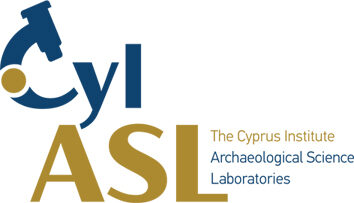Introduction
This Masters’s thesis was carried out in the framework of the MA program “Field Archaeology on Land and Under the Sea” at the University of Cyprus, in collaboration with STARC at the Cyprus Institute. The thesis was completed in May 2022 under the supervision of Vasiliki Kassianidou, Thilo Rehren and Apostolos Sarris. The focus of the thesis was on the metallurgical technology and tradition of the Late Roman period in Polis Chrysochous, Western Cyprus. During this period there is a significant increase in copper production on the island with large slag heaps found in the foothills of the Troodos Mountains. Previous studies have shown that there is uniformity in the metallurgical technology. The two case studies concern slag heaps located in the area east of Polis Chrysochous. The first slag heap, at Argaka, has yielded 14C dates between the 3rd and the 8th century CE. It is quite large in size, although it has been altered during the 20th century CE (Zwicker 1986, Socratous et al. 2015). The Pelathousa slag heap dates between the 6th to the 8th century CE; it appears much smaller in size, but is well integrated into the architectural web of the village, making it impossible to assess its original size.


Methodology
· Fifty samples from both slag heaps were analyzed by HHpXRF on a clear-cut surface in order to get a first understanding of the composition of the material and select representative samples for further analysis.
· Twenty-two of them were mounted for microscopic analysis and further studied under the optical microscope (OM) in order to examine their microstructure.
· Fifteen of these were then analyzed with SEM-EDS for more accurate chemical composition, higher magnification and phase characterization.

Results
· All are copper-matte smelting slags, indicating that copper sulfide ores were smelted.
· There are two different smelting “recipes”: a manganese-rich (between 14 and 38 wt% MnO) and a manganese-poor (<6 wt% MnO) one.
· The smelting technology of both is similar and very efficient, with residual copper content typically well below 1 wt%.

Conclusions
The study of the metallurgical slag showed that chalcopyrite-rich ore with a silica gangue was smelted, often with the addition of manganese oxide from local gossan deposits. There is technological uniformity within each of the slag heaps, between the two of them, and also with contemporary slag heaps elsewhere, pointing to a highly efficient standardized copper production during this period.
Acknowledgements
I am deeply grateful to Vasiliki Kassianidou for her feedback and for trusting me with the material and to Thilo Rehren for the guidance in the analytical techniques. I would like to thank the Archaeological Research Unit (ARU) and the Science and Technology in Archaeology and Culture Research Center (STARC) for providing me with the facilities and equipment to study the material.
I am particularly grateful to Brunella Santarelli, Research Technical Specialist at STARC, who supervised and helped in all aspects of sample preparation and analysis.

